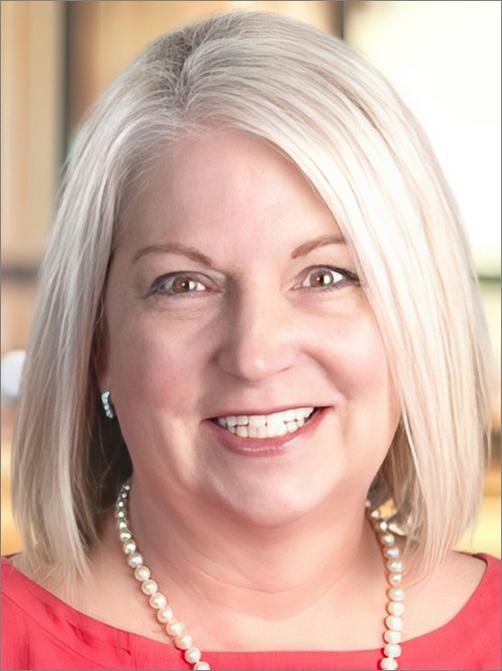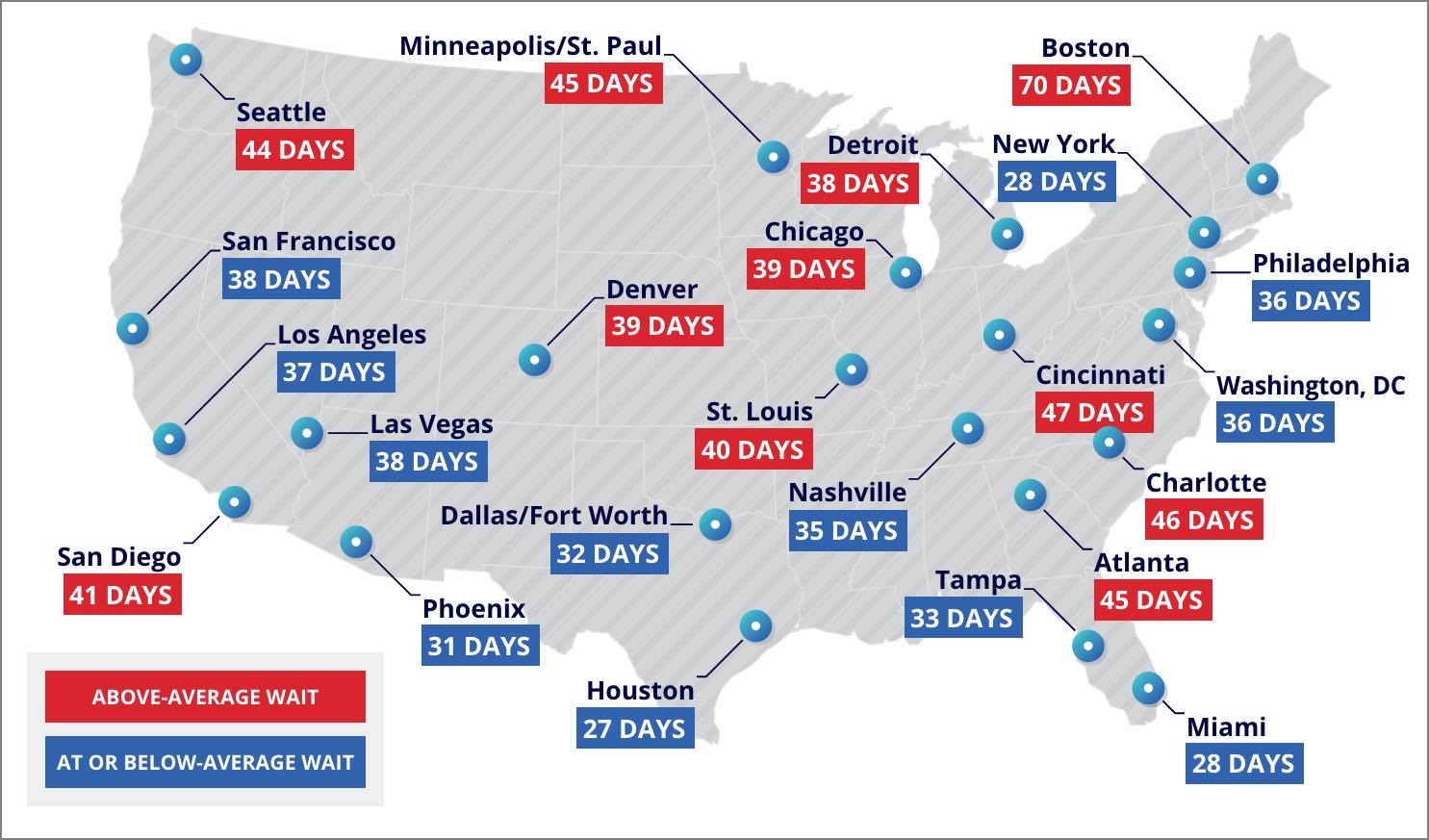Patients outside the US wait even longer to see healthcare specialists with some appointments scheduled a year out in the Canadian province of Nova Scotia
Data recently released by healthcare consulting firm ECG Management Consultants (ECG) reveals that patients in the United States wait an average of 38 days for healthcare appointments. That figure is a significant stretch from the desired industry standard of 14-day or less wait times, according to Becker’s Hospital Review.
Clinical laboratories serve the needs of physicians who see patients and refer testing needed by patients to labs. Thus, average wait times should be of interest to lab professionals who strive to meet reporting turnaround times for lab test results, particularly given the unique way that ECG conducted its survey of patient wait times.
In “The Waiting Game: New-Patient Appointment Access for US Physicians,” ECG wrote, “Adopting a ‘secret shopper’ approach, we put ourselves in the shoes of the average patient trying to book an appointment. We contacted nearly 4,000 physician practices in 23 major cities across the US, posing as a new, commercially insured patient seeking care for general, nonemergent conditions that typically don’t require a physician referral.”
ECG’s study provides “a realistic view of where and in what specialties patients face the most significant challenges to accessing routine care,” the authors wrote in their published report. The report also includes patients’ appointment-keeping behavior based on length of wait times.
“Consumer expectations have evolved significantly in all industries. From buying a plane ticket to making a restaurant reservation, the consumer experience has been highly optimized and customers in turn have become accustomed to information and services being available at their fingertips. They bring the same expectations about speed and convenience to healthcare,” the researchers explained.
ECG pointed out that when patients are required to wait 14 days or more to see their physicians, no shows and cancellations increase dramatically.
“Numerous studies have shown that patients are significantly less likely to show up for appointments that are scheduled further out,” the study authors noted.

“One of the takeaways was how difficult the patient experience is. Not only did our secret shoppers have to go out and find physicians, they had to sit on the phone sometimes on very long holds and go through multiple barriers and jump through hoops,” Jennifer Moody (above), partner with ECG Management Consultants and one of the authors of the study, told Becker’s Hospital Review. “Even in that case, they weren’t successful in scheduling appointments with all the practices they called. I think of the average consumer who might be having a similar experience,” she added. Lengthy wait times are not believed to be an issue when patients need clinical laboratory tests. (Photo copyright: ECG Management Consultants.)
Getting Authentic Results
To gather the study data, ECG distributed its secret shoppers throughout 23 major US cities, reaching almost 4,000 physician practices (between 145-168 per city) to schedule appointments for non-emergency conditions not needing a physical referral.
The researchers gathered wait times for TNAAs (third next available appointments), a common metric. They chose TNAAs because first and second appointments often produce unclear results due to extenuating circumstances or late cancellations, Becker’s Hospital Review reported.
The researchers recorded TNAAs for the following specialties:
- Cardiology (39 days),
- Dermatology (40 days),
- Family medicine (29 days),
- Gastroenterology (48 days),
- General surgery (22 days),
- Neurology (63 days),
- Obstetrics/gynecology (37 days),
- Ophthalmology (37 days),
- Orthopedic surgery (20 days),
- Pediatrics (24 days), and,
- Rheumatology (68 days).
They found the average wait time to be 38 days. And “of the 253 metropolitan market and specialty combinations included in this research, only 6% had an average wait time of 14 days or less,” Becker’s reported.
The researchers omitted the physician practices that were unable to either take or return calls, take messages, or provide a hold time under five minutes to give the secret shopper an answer, Becker’s added.
Jennifer Moody, Partner, ECG Management Consultants, one of the authors of the study, “was particularly surprised by the portion of callers who never even made it to the stage of learning about wait times. Out of 3,712 physician practices, callers were able to secure responses from only 3,079, meaning nearly one in five physician practices could not provide appointment availability information,” Becker’s reported.
The lowest average wait time in all specialties was 27 days in Houston, and the longest was 70 days in Boston. “A key takeaway from the report is that physician concentration does not guarantee timely access, as a major healthcare hub like Boston helps illustrate,” Becker’s noted, adding that physicians in such areas may “devote time to teaching or research over appointments.”

The graphic above, taken from ECG’s published report, shows the average TNAA times recorded by their secret shoppers at medical specialty practices in major cities across the US. (Graphic copyright: ECG Management Consultants.)
Other Country’s Wait Times
Healthcare systems outside the US struggle with patient wait times as well. Forbes reported that patients of Canada’s public health system “faced a median wait of 27.7 weeks for medically necessary treatment from a specialist after being referred by a general practitioner. That’s over six months—the longest ever recorded.”
Patients in Nova Scotia wait even longer. There they “face a median wait of 56.7 weeks—more than a year—for specialist treatment following referral by a general practitioner. Those on Prince Edward Island are also in the year-long waiting club—a median of just over 55 weeks,” Forbes noted.
And in the UK, a recent survey found that “more than 150,000 patients had to wait a day in A&E [accident and emergency] before getting a hospital bed last year, according to new data,” with the majority of those patients over the age of 65, according to The Guardian.
ECG suggestions that may reduce wait times include:
- Adopt automation and self-service tools in an “easily navigable platform” that enables patients to schedule appointments 24/7.
- Ensure healthcare providers are “utilized appropriately and at the top of their license.”
- Address inequities in access to healthcare regardless of patients’ location or socioeconomic status.
There is more in the ECG report that hospitals—as well as clinical laboratories—can use to reduce patient wait times to see care providers. As the authors wrote, “For patients, the first step of the care journey shouldn’t be the hardest.”
—Kristin Althea O’Connor
Related Information:
The 38-day Delay: What the Wait Time Average Says about Healthcare Access
The Waiting Game: New-Patient Appointment Access for US Physicians
In the US, Wait Times to See a Doctor Can Be Agonizingly Long
Canadian Health Care Leaves Patients Frozen In Line
Tenfold Rise in A&E Patients Waiting More than 24 Hours for a Bed


